Ekvira Temple is a Hindu temple located near Lonavala in Maharashtra. It is dedicated to Goddess Ekvira who is considered as the Koli deity who is considered as the protecting mother of the people of this region. The temple is a popular pilgrimage site for the Agri and Koli communities. They visit the temple for blessings and prosperity. The temple is perched on a hill and offers a panoramic view of the surrounding area. Here one can climb about 150 to 200 steps to reach the temple. Pune to Lonavala One day Trip By Private Cab
The temple is known for its architecture and historical importance. Because this temple was built in the period of 2nd century BC and then it has been renovated several times over the centuries. Ekvira Temple is a place of spiritual and cultural importance that attracts thousands of devotees and tourists every year In this article, we will analyze Ekvira Temple in terms of its history, culture, and beauty, and why it is a must-see for anyone interested in Hinduism and Indian heritage.
Table of Contents
How to Rich Ekvira Temple, Timing and Entry fees:

To reach Ekvira Temple, you need to first reach Lonavala, which is the nearest city to the temple. Lonavala is well-connected by road, rail and air to Mumbai and Pune. Here are some ways to reach Lonavala and then Ekvira Temple:
- By Road: You can take the Mumbai Pune Expressway or the old Mumbai Pune highway to reach Lonavala. From Lonavala, you can take a local bus, cab or auto to reach Ekvira Temple, which is about 10 km away on the old Mumbai Pune highway. You will see a large gate on the left side that leads to the temple. You can also drive directly to the temple from Mumbai or Pune by following the same route.
- By Rail: You can take any train that stops at Lonavala railway station from Mumbai or Pune. Some of the daily express trains that cross Lonavala are Deccan Queen, Deccan Express, Pragati Express, Sinhagad Express and Indrayani Express. From Lonavala railway station, you can take a bus, cab or auto to reach Ekvira Temple.
- By Air: The nearest airports to Lonavala are Mumbai Airport and Pune Airport. From either of these airports, you can take a bus, cab or train to reach Lonavala and then Ekvira Temple.
The timing of Ekvira Temple is from 5:00 am to 12:00 pm and from 4:00 pm to 9:00 pm. The entry fee for Ekvira Temple is free for all visitors. However, you may have to pay a nominal fee for parking your vehicle near the temple. You may also have to pay for the services of a guide or a priest if you wish to perform any rituals or ceremonies at the temple.
Things to Do / Must See: Ekvira Temple

If you are looking for a spiritual and scenic destination in Maharashtra, you should not miss the Ekvira Temple near Lonavala. This temple is dedicated to Goddess Ekvira, who is regarded as a form of Goddess Renuka and the kuladevi of the Koli people. The temple is located next to the Karla Caves, which are ancient Buddhist rock-cut caves that date back to the 2nd century BC.
The Ekvira Temple is believed to have been built by the Pandavas during their exile, as per the goddess’s wish. The temple complex consists of three shrines facing west, surrounded by sixteen smaller shrines of other deities. The main shrine houses the idol of Goddess Ekvira, who is also worshipped as Bhavani in different parts of India and Nepal. The goddess is said to have magical powers and grants the wishes of her devotees.
The temple attracts thousands of pilgrims every year, especially during the festivals of Navaratri and Chaitra Navratra. The temple is also a prime spot of worship for the Aagri-Koli people, who are the traditional fishermen community of Maharashtra. They celebrate an annual festival in honor of the goddess at the Karla Caves, where they offer prayers, perform rituals and cultural programs.
The temple is situated on a hill and can be reached by climbing around 500 steps. The climb offers a panoramic view of the surrounding hills and valleys. The temple is also close to other tourist attractions such as the Bhaja Caves, the Lohagad Fort and the Lonavala Lake.
The Ekvira Temple is a must-see for anyone who wants to experience the rich heritage, culture and nature of Maharashtra. It is a place where you can feel the divine presence of the goddess and enjoy the beauty of the Karla Caves. It is a place where you can witness the faith and devotion of the Koli people and their unique traditions. It is a place where you can find peace and tranquility amidst the chaos of life.
History of Ekvira Temple

The history of Ekvira Temple is shrouded in mystery and legend. According to one popular belief, the temple was built by the Pandavas during their exile in the forest. The goddess Ekvira appeared before them and asked them to construct a temple for her before dawn. The Pandavas obeyed her command and completed the temple overnight. The goddess was pleased with their devotion and granted them protection from their enemies.
Another version of the story credits the Maratha warrior king Chhatrapati Shivaji Maharaj as the builder of the temple. He erected the temple as a tribute to the goddess Ekvira, who was his family deity and the patron of the Koli fisherfolk. The temple has undergone several renovations over the centuries, but the main idol of the goddess remains unchanged. The temple is also a site of religious and cultural importance for the Aagri and Koli communities, who worship Ekvira as their mother and protector. They visit the temple to seek her blessings and celebrate various festivals such as Navratri and Chaitra Palkhi.
Architecture of Ekvira Temple

The architecture of Ekvira Temple is a blend of ancient and modern styles. The temple is located near the Karla Caves, which are a group of rock-cut Buddhist monuments dating back to the 2nd century BC. The temple is built right next to the main chaitya (prayer hall) of the caves, which has a large horseshoe-shaped arch and a wooden roof. The temple has a maha-mandapa (great hall), a varsha-mandapa (rain hall) and a gopura (gateway) in front of the main shrine.
The main shrine and the two adjacent shrines are surrounded by sixteen smaller shrines of other deities. The temple is carved out of basalt rock and has intricate sculptures and carvings on the walls and pillars. The main idol of the goddess Ekvira is made of black stone and is adorned with jewellery and flowers. The temple also has an idol of Jogeshwari Devi, another form of the goddess. The temple is situated on a hilltop and offers a scenic view of the valley below.
Best places to visit in Lonavala
Visapur Fort: Unraveling the Mysteries of Famous Historic Citadel
Introduction: Nestled amidst the lush greenery of the Western Ghats, Visapur Fort stands as a…
Lohagad Fort: Best Magnificent Citadel of Historical Grandeur
Introduction: Lohagad Fort, perched atop the scenic hills of Maharashtra, stands as a testament to…
Top 10 Places Visit in Monsoon from Mumbai
Sunil Celebrity Wax Museum: A Unique Attraction in Lonavala
Lonavala is a popular hill station in Maharashtra, known for its scenic beauty, waterfalls, caves,…
Lonavala Waterfall Lonavala: A Splashy and Joyful Spot
If you are looking for a place to have some splashy and joyful fun with…
Lonavala Dam Lonavala: A Scenic and Tranquil Spot
If you are looking for a place to enjoy the scenic and tranquil atmosphere of…
Religious Significance of Ekvira Temple
The Ekvira Temple is a Hindu temple located near the Karla Caves near Lonavala in Maharashtra, India. The temple is dedicated to Goddess Ekvira, who is regarded as a form of Goddess Renuka, the mother of Parashurama, one of the incarnations of Lord Vishnu. The temple is a prime spot of worship for the Aagri and Koli people, who consider Ekvira as their kuladevi or clan deity. The temple is also visited by many other communities, especially those belonging to the CKP and Daivadnya Brahmins castes.
Discussion of the temple’s role in Hinduism and its connection to various deities
The Ekvira Temple is believed to have been built by the Pandavas, the heroes of the epic Mahabharata, during their exile. According to legend, Goddess Ekvira appeared before them and asked them to construct a temple for her before dawn. The Pandavas obeyed her command and built the temple overnight. The goddess was pleased with their devotion and granted them the boon that they would not be discovered by their enemies during their exile.
The temple is situated next to the Karla Caves, which are ancient Buddhist rock-cut caves dating back to the 2nd century BC. The caves contain a large chaitya or prayer hall, which houses a stupa and an image of Buddha. The caves also have sculptures and inscriptions depicting various aspects of Buddhism. The presence of both Hindu and Buddhist monuments at the same site reflects the religious harmony and syncretism that prevailed in ancient India.
The temple complex consists of three main shrines facing west, surrounded by sixteen smaller shrines of various deities. The central shrine houses the idol of Goddess Ekvira, who is also worshipped as Bhavani or Durga in different parts of India and Nepal. The goddess is depicted as a fierce warrior with eight arms, holding various weapons and riding a lion. She is the symbol of power, courage and protection.
The southern shrine contains the idol of Jogeshwari Devi, who is another form of Goddess Parvati, the consort of Lord Shiva. She is also known as Yogeshwari or Yogini, as she represents the mystical aspect of Hinduism. She is shown as sitting on a lotus with four arms, holding a trident, a drum, a rosary and a water pot.
The northern shrine is dedicated to Goddess Renuka, who is the mother of Goddess Ekvira and Lord Parashurama. She is also known as Yellamma or Matangi, as she is associated with fertility and prosperity. She is depicted as standing on a buffalo with six arms, holding a sword, a shield, a bow, an arrow, a lotus and a skull.
Explanation of the rituals and ceremonies performed at the temple
The devotees visit the temple throughout the year to offer prayers and seek blessings from Goddess Ekvira. They have to climb around 500 steps to reach the temple, which is situated on a hill. They also have to pass through a narrow tunnel that leads to the main entrance of the temple.
The main rituals performed at the temple are:
- Abhishek: This involves bathing the idol of Goddess Ekvira with water, milk, honey and other substances to show reverence and gratitude.
- Aarti: This involves waving lamps in front of the idol of Goddess Ekvira while chanting hymns and songs to praise her glory and grace.
- Prasad: This involves distributing food or sweets among the devotees as a sign of sharing and goodwill.
- Haldi-Kumkum: This involves applying turmeric and vermilion powder on the forehead of Goddess Ekvira and other female devotees as a symbol of auspiciousness and beauty.
- Coconut Breaking: This involves breaking coconuts at the feet of Goddess Ekvira to seek her favour and remove obstacles in life.
The main festivals celebrated at the temple are:
- Navratri: This is a nine-day festival that occurs twice a year, once in March-April (Chaitra Navratri) and once in September-October (Ashwin Navratri). During this festival, Goddess Ekvira is worshipped in different forms such as Shailaputri, Brahmacharini
Cultural Significance of Ekvira Temple
Discussion of the temple’s role in the cultural history of the region
The Ekvira Temple is believed to have been built by the Pandavas, the heroes of the epic Mahabharata, during their exile. According to legend, Goddess Ekvira appeared before them and asked them to construct a temple for her before dawn. The Pandavas obeyed her command and built the temple overnight. The goddess was pleased with their devotion and granted them the boon that they would not be discovered by their enemies during their exile.
The temple is situated next to the Karla Caves, which are ancient Buddhist rock-cut caves dating back to the 2nd century BC. The caves contain a large chaitya or prayer hall, which houses a stupa and an image of Buddha. The caves also have sculptures and inscriptions depicting various aspects of Buddhism. The presence of both Hindu and Buddhist monuments at the same site reflects the religious harmony and syncretism that prevailed in ancient India.
The temple complex consists of three main shrines facing west, surrounded by sixteen smaller shrines of various deities. The central shrine houses the idol of Goddess Ekvira, who is also worshipped as Bhavani or Durga in different parts of India and Nepal. The goddess is depicted as a fierce warrior with eight arms, holding various weapons and riding a lion. She is the symbol of power, courage and protection.
The southern shrine contains the idol of Jogeshwari Devi, who is another form of Goddess Parvati, the consort of Lord Shiva. She is also known as Yogeshwari or Yogini, as she represents the mystical aspect of Hinduism. She is shown as sitting on a lotus with four arms, holding a trident, a drum, a rosary and a water pot.
The northern shrine is dedicated to Goddess Renuka, who is the mother of Goddess Ekvira and Lord Parashurama. She is also known as Yellamma or Matangi, as she is associated with fertility and prosperity. She is depicted as standing on a buffalo with six arms, holding a sword, a shield, a bow, an arrow, a lotus and a skull.
The Ekvira Temple has played an important role in the cultural history of the region, as it has been a source of inspiration and identity for many people over the centuries. The temple has witnessed many historical events and changes, such as invasions, wars, migrations, social reforms and political movements. The temple has also been a center of learning and art, as it has attracted many scholars, poets, musicians and sculptors who have contributed to its glory and beauty.
Explanation of the temple’s impact on local art, music and literature
The Ekvira Temple has had a significant impact on local art, music and literature, as it has been a medium of expression and creativity for many artists and writers. Some examples are:
- Art: The temple has been adorned with various sculptures and paintings that depict the stories and legends of Goddess Ekvira and other deities. The temple also showcases the architectural styles and techniques of different periods and cultures that have influenced its construction and renovation. The temple has also inspired many modern artists who have created works based on its themes and motifs.
- Music: The temple has been a hub of musical activities that celebrate the glory and grace of Goddess Ekvira. The temple hosts various musical events and festivals that feature devotional songs, hymns
FAQs
Q: How many steps are there in Ekvira Temple?
A: There are about 500 steps to reach the Ekvira Temple, which is located on a hill next to the Karla Caves. However, you can also use your vehicle or public transport and bypass around 300 steps, but you still have to walk 200 steps to the temple.
Q: Which temple is famous for Ekvira?
A: The Ekvira Aai Mandir near Lonavala in Maharashtra is the most famous temple for Ekvira, who is a Hindu goddess and the kuladevi of the Koli people. The temple is a prime spot of worship for the Aagri-Koli people, who are the traditional fishermen community of Maharashtra.
Q: Who built Ekvira Temple?
A: According to the legend, the Pandavas built the Ekvira Temple during their exile in the forest, as per the goddess’s wish. The goddess instructed them to build a temple for her before dawn, and they did so in one night. The goddess was impressed by their devotion and granted them the boon that nobody would discover them during their exile.
Conclusion
In this article, we have explored the Ekvira Temple, a sacred and scenic destination in Maharashtra. We have learned about the history, architecture and legends of the temple, which is dedicated to Goddess Ekvira, the kuladevi of the Koli people. We have also seen how the temple is connected to the Karla Caves, which are ancient Buddhist rock-cut caves that showcase the art and culture of the past. We have also discovered the festivals and traditions of the Aagri-Koli people, who worship the goddess with fervor and devotion.
The Ekvira Temple is more than just a place of worship. It is a place where you can experience the rich heritage, culture and nature of Maharashtra. It is a place where you can feel the divine presence of the goddess and enjoy the beauty of the Karla Caves. It is a place where you can witness the faith and devotion of the Koli people and their unique traditions. It is a place where you can find peace and tranquility amidst the chaos of life.
If you are looking for a spiritual and scenic getaway, you should not miss the Ekvira Temple. It is a must-see for anyone who wants to explore the hidden gems of Maharashtra. So, what are you waiting for? Plan your trip to the Ekvira Temple today and experience it for yourself!

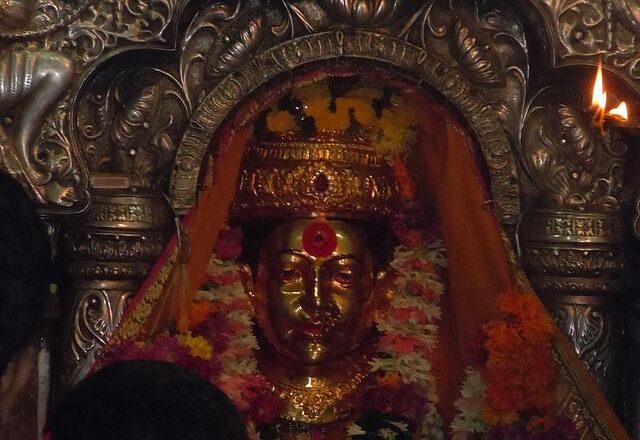

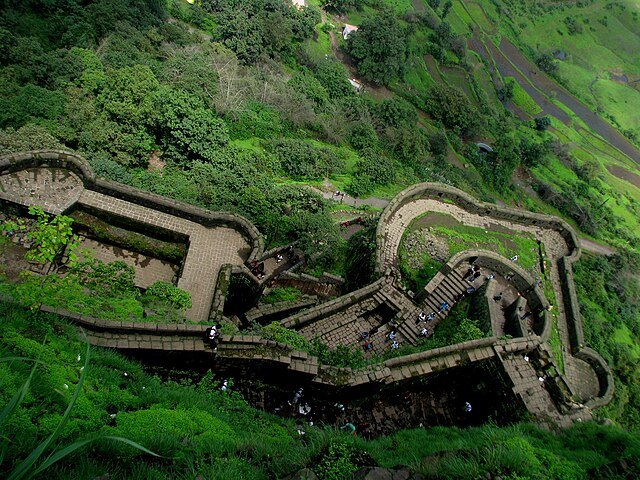

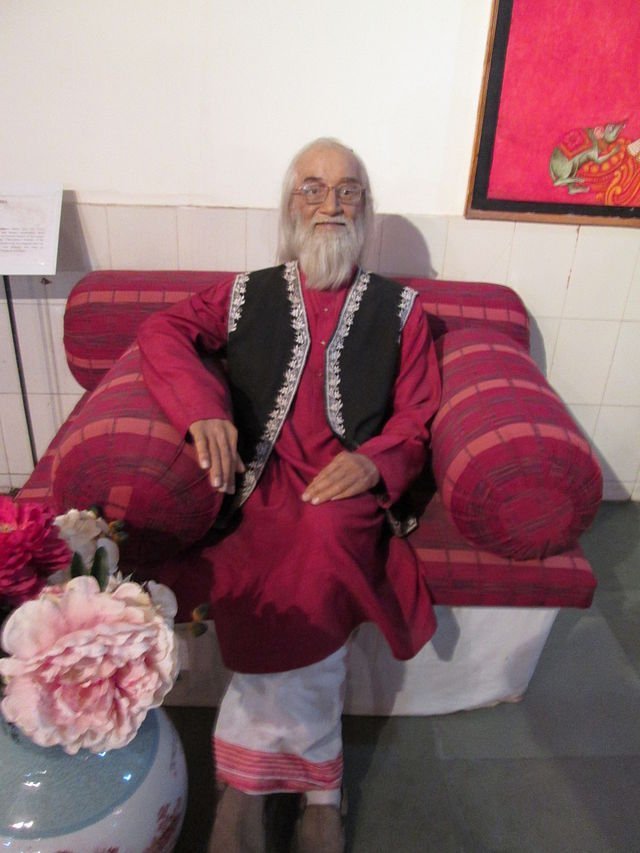





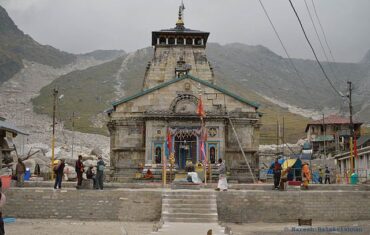


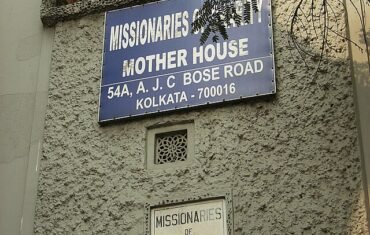



Comments are closed.